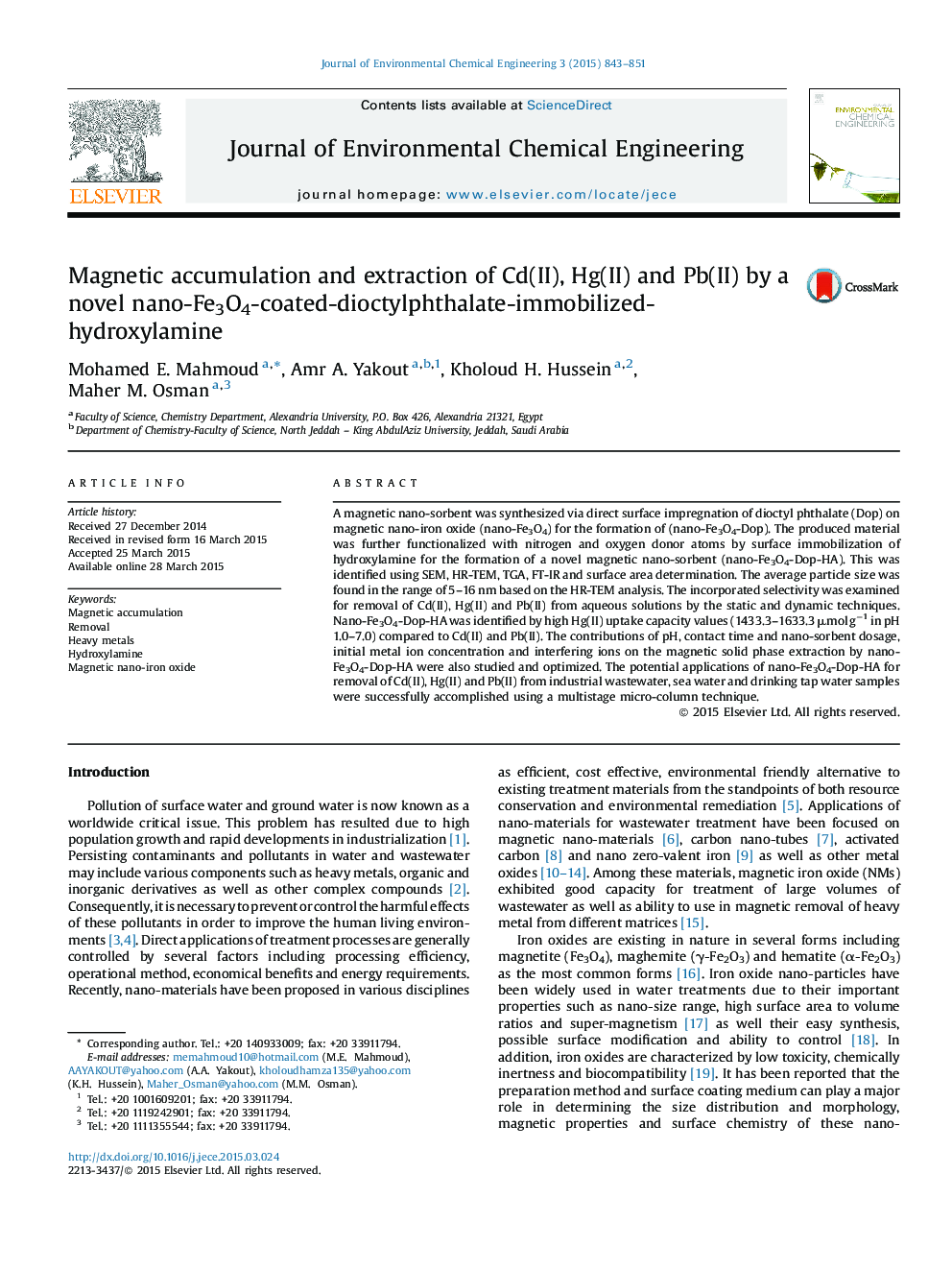| Article ID | Journal | Published Year | Pages | File Type |
|---|---|---|---|---|
| 222307 | Journal of Environmental Chemical Engineering | 2015 | 9 Pages |
•A novel magnetic nano-sorbent was synthesized.•The range of particles size is 5–16 nm.•Nano-Fe3O4-Dop-HA is highly selective for Hg(II) and Cd(II).•Experimental controlling factors were studied and optimized.•Successful applications to wastewater, seawater and drinking tap water samples.
A magnetic nano-sorbent was synthesized via direct surface impregnation of dioctyl phthalate (Dop) on magnetic nano-iron oxide (nano-Fe3O4) for the formation of (nano-Fe3O4-Dop). The produced material was further functionalized with nitrogen and oxygen donor atoms by surface immobilization of hydroxylamine for the formation of a novel magnetic nano-sorbent (nano-Fe3O4-Dop-HA). This was identified using SEM, HR-TEM, TGA, FT-IR and surface area determination. The average particle size was found in the range of 5–16 nm based on the HR-TEM analysis. The incorporated selectivity was examined for removal of Cd(II), Hg(II) and Pb(II) from aqueous solutions by the static and dynamic techniques. Nano-Fe3O4-Dop-HA was identified by high Hg(II) uptake capacity values (1433.3–1633.3 μmol g−1 in pH 1.0–7.0) compared to Cd(II) and Pb(II). The contributions of pH, contact time and nano-sorbent dosage, initial metal ion concentration and interfering ions on the magnetic solid phase extraction by nano-Fe3O4-Dop-HA were also studied and optimized. The potential applications of nano-Fe3O4-Dop-HA for removal of Cd(II), Hg(II) and Pb(II) from industrial wastewater, sea water and drinking tap water samples were successfully accomplished using a multistage micro-column technique.
Graphical abstractFigure optionsDownload full-size imageDownload as PowerPoint slide
